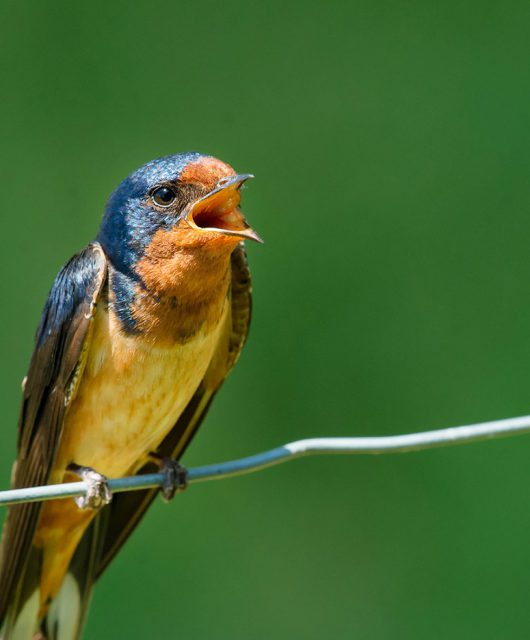Much remains unknown about the origin and transmission of viruses.
While bats have recently received some negative press due to their role as a probable source of the virus causing COVID-19, much remains unknown about the origin and transmission of viruses, including the SARS-CoV-2 virus. In fact, as research into viruses continues, bats may end up being a source of clues to treatments for viral infections.
Coronaviruses are among more than 200 species of viruses known to infect humans, and among an estimated few hundred thousand viruses that infect other mammals. Only a fraction of these viruses cause disease, and some are even beneficial. Some viruses confer protection against other viruses, for example being infected with pegivirus offers some protection against AIDS, or from various bacterial infections, like the bubonic plague.
Four Types of Coronaviruses
Scientists have determined there are four types of coronaviruses: alpha, beta, gamma, and delta coronaviruses.
- Alpha and beta coronaviruses infect mammals
- Gamma and delta coronaviruses primarily infect birds
Seven species of coronavirus are known to infect humans, four of which are regularly found circulating, or ‘endemic’. These four endemic coronaviruses include two alpha-coronaviruses. These are thought to have originated in bats. Then there are two beta-coronaviruses, thought to originate from rodents. They are associated with mild clinical symptoms in humans and are best known as the second most frequent cause of the common cold.
These four endemic coronaviruses are believed to have been transmitted to humans in the distant past through intermediate hosts, specifically domesticated animals such as cattle, swine, or camels. Surprisingly, our closest relatives — great apes and other primates — don’t seem to have any host-specific coronaviruses. This may be perhaps because, unlike humans, they don’t have regular contact with domestic animals.
The Three Coronaviruses Which Can Be Severe for Humans
The three other beta-coronaviruses known to infect humans are not always so mild as the common cold: MERS-CoV causes Middle East respiratory syndrome, SARS-CoV causes severe acute respiratory syndrome, and SARS-CoV-2 causes COVID-19. Fortunately MERS-CoV and SARS-CoV don’t seem to be endemic and have had limited circulation, but the jury’s still out on how long SARS-CoV-2 will be with us. Each of these viruses may have originated in bats and been transferred to humans through intermediary animals, although there is much uncertainty about the origin of SARS-CoV-2.
Should We Then Be Afraid of Bats?
Does this mean you need to be scared of all bats? Certainly not! No SARS-related coronaviruses have ever been found in bats in the Americas. They are known to host alpha-coronaviruses, but beta-coronaviruses appear relatively rare.
No SARS-related coronaviruses have ever been found in bats in the Americas.
In fact, scientists are more concerned about humans transferring the virus to bats in North America than bat-to-human transmission. In contrast, a diverse array of alpha- and beta-coronaviruses have been found in Eurasian bats, including bats in China, although previous coronavirus pandemics have all been transferred to humans through intermediary hosts and not direct bat-to-human transmission.
Why Are North American Bats SARS-related Coronaviruses-free?
One of the reasons for this difference in virus diversity is the wide gap between the number of bat species found in Asia compared to North America.
At least 147 bat species are present in China, which places it among the most bat-rich countries in the world. In contrast, only 19 bat species regularly occur in Canada and 44 in North America.
This difference is important since a recent scientific paper has found that the number of viruses associated with specific groups of birds or mammals depends on the number of species in each group. The larger the number of species in animal groups such as bats, the larger the number of virus species.
Bats Can Help Us With New Treatments
New treatments for viral infections may be found through understanding how and why bats appear to tolerate these viruses with no adverse effects.
How do they do it?
One possibility is that bats have evolved a diminished immune response to prevent tissue damage in cases of exposure to external stressors, such as viruses. This may have evolved in bats in response to the high energy demands of flight, which can cause DNA damage.
Bats are the only mammals capable of powered flight, and during flight bats consume approximately four times as much oxygen as when at rest. A diminished immune response can prevent inflammation, an important driver of tissue damage during infection, and may have increased bat lifespan – some bats can live up to 41 years!
Further research on bat immune responses to viral infections and how they tolerate infections may help develop treatments for viral infections in humans.
A Long Way to Go
There is still a lot to be learned about the biodiversity of viruses in mammals. For example, two of the four coronaviruses endemic in humans were only discovered after research effort on coronaviruses increased following the SARS-CoV outbreak in 2003.
Growing human populations encroach more every year on wildlife and natural spaces, changing interactions among wildlife, domestic animals, and humans. These interactions and increasing global travel may provide new transmission routes for microbes, including viruses, but much remains unknown.
The current pandemic has spurred unprecedented levels of collaboration among scientists and institutions, leading to the generation of new knowledge on viruses. Funding continued wildlife research is essential to better understand virus transfer among animals and which virus types naturally occur in wildlife. Increased knowledge will make it possible to trace virus transmission routes among animals, and hopefully prevent or mitigate future virus outbreaks.



